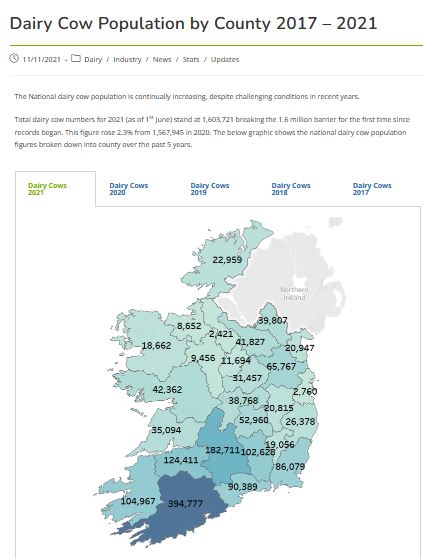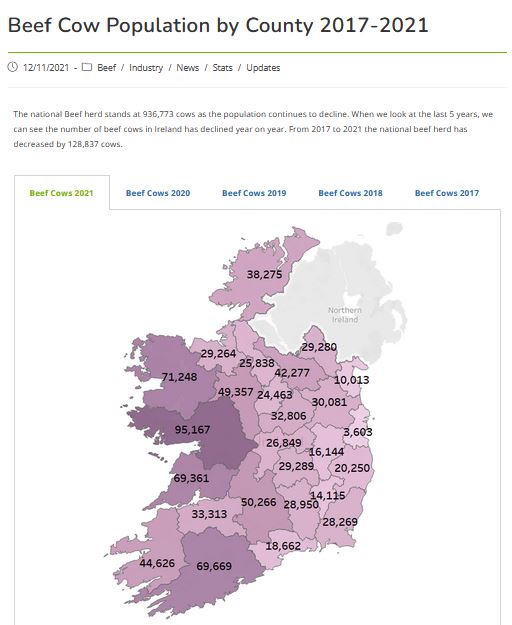|
For
Immediate Release
Press
Release November 29th 2022:
More Carbon Budget threats to Irish Farming following revelation that the Shannon LNG Emissions would
equal
the Methane Emissions from 1 Million Beef Cattle
- With up to 10
times the emissions of pipeline gas, LNG would mean a higher proportion
of the Carbon Budget Choice would be used for the fracked gas industry
and that even more Irish cattle would have to be culled and food
production reduced at a time of pending world food shortages to
compensate.
- Based on figures from the
Intergovernmental Panel on Climate Change (IPCC)), Methane Life Cycle Scientist Professor Robert Howarth of Cornell
University calculated that
the full lifecycle emissions for the 600 MW power plant proposed by
Shannon LNG (to power the 8 data centres it plans for the site) would
be the equivalent of the annual methane emissions of 450, 000 dairy
cows or 999,000 beef cows. Given that there currently is a budget for
emissions, why should farmers suffer the brunt of emissions cuts while
the owners of Shannon LNG, a US-based company, New Fortress Energy, run by the US King of Subprime
lending Wes Edens, makes millions of dollars and emits large amounts of
toxic gases at their expense?
- Locking our limited carbon budget into
fracked gas powering Shannon LNG’s proposed development means even more
of the national herd will have to be culled and food production in
Ireland reduced at a time of pending world food shortages.
- 450,000 dairy cows represents 28% of
the total number of dairy cows (1,603,721) in the country - and
is more than the total number of dairy cows in Kerry, Limerick,
Tipperary and Clare combined.

- 1 million beef cattle is more than the entire beef cow herd of 936,773 in Ireland.

- The Fugitive Methane Emissions alone (as
separate from the carbon dioxide emissions) from the proposed Shannon
LNG project would equal the methane emissions from 237,000 dairy cows
(14.7% of the national herd and greater than the total number of dairy
cows in Kerry and Limerick combined) or 530,000 beef cattle (over 56%
of the national beef cow herd).
- As part of its medium-term decarbonisation targets in the Programme for Government, the government has committed to delivering an average 7% reduction in emissions each year to 2030.
- However, Norwegian Research firm Rystad Energy found in November 2022 that the production and transport of LNG causes
up to 10 times the carbon emissions of the pipeline gas from the UK
network currently supplying gas to Ireland.
- And Shannon LNG itself admitted in its 2021
planning application that the upstream emissions of LNG are 2.5 times
greater than those of natural gas from the UK gas network currently
supplying gas to Ireland.
- In
2019, the Joint Oireachtas Committee on Climate action were informed by
scientists that importing US fracked gas to Tarbert would
have a 44% higher carbon-equivalent footprint over a 20-year period
than importing coal to Moneypoint power station in County Clare.
- In effect, unnecessary higher carbon emissions from Shannon LNG's
fracked gas imports would mean other sectors of the economy having to
unacceptably reduce their production even further, such as the dairy and beef sector.
The reasons why fracked gas is so controversial
- The Compendium: The “Compendium of
Scientific, Medical, and Media Findings Demonstrating Risks and Harms
of Fracking”, produced by Concerned Health Professionals of New
York and Physicians for Social Responsibility, is a collection of some
2,000 abstracts of and links to medical, scientific and investigative
evidence that fracking-related activities harm public health, the
environment, and the climate.
- In May 2021, NUI Galway’s Irish Centre for
Human Rights published a research report finding that fracking is
incompatible with states’ human rights law obligations to protect,
respect and fulfil basic human rights including the right to
life,health, water, food, housing, access to information, public
participation, a safe, clean, and healthy environment, and the
rights of marginalised persons & communities. It noted that a
significant body of scientific evidence now exists to demonstrate that
fracking is dangerous to public health, water, air, climate stability,
farming, property, and economic vitality in ways that cannot be
mitigated through regulation.
- Fracking pollutes and poisons water, land
and people. North Kerry forms part of the Clare Gas Basin and was
targeted for fracking in 2011. This stopped when Ireland banned
fracking in 2017. It is unacceptable to now impose fracking damage on
other rural communities abroad.

- But we also fear that if
fracked gas comes into Ireland, it would only be a matter of time
before we see an attempt to start fracking here under the excuse that
it would do less climate damage than importing US fracked gas.
Cuadrilla has already used that same argument in the UK to lobby for
fracking there. Cuadrilla CEO, Francis Egan, stated that “By
replacing liquefied natural gas imports and continuing to decrease
reliance on coal, with shale gas produced onshore, we will reduce the
UK’s carbon footprint and provide a cost-effective source of energy for
our homes, businesses and industry.”
|
Notes:
Professor Rober Howrath of Cornell University confirmed those figures via email as follows:
On Tue, 16 Aug 2022, 19:01 Robert Warren Howarth, <[email protected]> wrote:
Here are some numbers:
1) for a 200 MW electric generating facility, if it operates full time
24/7 (ie, 100% capacity), it produces 1.75 billion kwh of electricity
in a year. According to the US EIA, it takes 8.04 MJ of natural
gas to produce 1 kwh of electricity. So the plant would burn 14.1
billion MJ of natural gas. CO2 emissions are 50 g CO2/MJ, so the plant
is releasing 700 billion g of CO2 per year at the site of combustion.
If the gas is LNG coming from the US, then there are additional CO2
emissions from liquifying and transporting the gas, which are probably
in the range of 20% of the emissions on site, or 140 billion g CO2 per
year. So total CO2 emissions are 840 billion g of CO2 per
year. Then of course there are the methane emissions; for
the US, a good estimate is that 3.5% of methane in the gas consumed is
emitted unburned to the atmosphere..... it is probably worse than
this for LNG, since methane is allowed to evaporate ("boil off") from
the tanker to keep the rest of the LNG in liquid form. Industry
claims they capture all of this, but that is unlikely to be true.
Still, we have no data, so let's give them the benefit of the doubt,
ignore the boil off, and look only at the 3.5% emission rate. For
the amount of gas burned to emit 840 billion g of CO2 per year, and
using a 20 year GWP of 86 from the IPCC (2013), then methane emissions
are 950 billion g CO2-equivalents per year. Total emissions from
the 200 MW plant are 1.79 trillion g CO2-equivalents/year.
2) for a 600 MW facility, emissions would be exactly 3X more.
3) for dairy cows in Western Europe, methane emissions are 142 kg of
methane per cow per year, according to the IPCC (2006). Using the 20 yr
GWP of 84 from the IPCC (2013), that is 12 million g of CO2-equivalents
per cow per year (note the GWP is slightly less for methane from cows
than for methane from natural gas). Dividing 1.79 trillion by 12
million, it would take 150,000 cows to equal the emissions from the 200
MW plant.
4) for cows and cattle raised for meat rather than dairy, methane
emissions are 64 kg per cow per year. Using the same logic as in
#3, it would take 333,000 animals to equal the emissions from the
electric plant.
I hope this helps,
Bob Howarth
_________________________________
Robert W. Howarth, Ph.D.
The David R. Atkinson Professor of
Ecology & Environmental Biology
Cornell University, Ithaca, NY USA
Co-Editor in Chief, OLAR, the journal of
Ocean-Land-Atmosphere Research
Faculty Fellow, Cornell Atkinson Center
Following on from Professor Howarth’s calculations, we calculate that
the Methane Emissions alone from the 600 MW Shannon LNG project would
be equivalent to the following methane emissions from animals:
Number of Dairy cows: 950 billion divided by 12 million = 79,166 * 3 = 237,500.
Number of Beef Cattle: 950 billion divided by (64,000 * 84) = 176,711 * 3 = 530,133.
The emissions of 2,100 billion g of CO2 per
year produced at the site of combustion alone (700 x 3) would be
equivalent to the following methane emissons from animals:
Number of Dairy cows: 700 billion divided by 12 million =
58,333 * 3 = 175,000 (roughly 10 % of the national dairy herd and
more than the entire dairy cow herd in Counties Kerry and Clare
combined).
Number of Beef Cattle: 700 billion divided by (64,000 * 84
i.e.5,376,000) = 130,208 * 3 = 390,624 (roughly 40% of the
national beef cow herd and more than the entire beef cow herd in
Munster).
|
|
|
·
|







